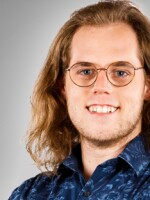EASTON, Pa. – Walking toward Our Lady of Lebanon Maronite Catholic Church in the heart of Downtown Easton on Sunday, folks could hear the festival before they saw it.
Lebanese music echoed down the narrow streets, and as visitors got closer, the smell of roasting meat and other traditional foods started to fill the air.
Our Lady of Lebanon hosted the annual Lebanese Heritage Days on Saturday and Sunday, as it has each year for nearly five decades. The church has been a pillar of the city’s historic Lebanese community for generations.
- Our Lady of Lebanon Maronite Catholic Church in Easton hosted its 47th annual Lebanese Heritage Days
- The festival features Lebanese dancers, musicians, and, of course, food
- The church has been a pillar of Easton's Lebanese community for nearly a century, and the festival is its biggest fundraiser
“It's all about the values and the traditions that… came over from Lebanon, that we carried with us,” said Marta Gabriel, a church member and festival volunteer. “That's basically what we're celebrating here today, is what the church means to us.”
Each day of the two-day festival begins with a traditional Maronite Mass open to the community; Saturday was conducted in English, and Sunday in Arabic. In the afternoon, Lebanese musicians perform, followed by traditional dance troupes largely made up of children and teenagers.
Of course, the festival’s food is probably the star.
All manner of traditional delicacies were offered, from grape leaves, kibbeh, kebabs, and tabbouleh to hummus, pastries, zaatar pies and fried dough.
The ingredients and the labor to prepare them are donated by church members, and funds from food sales go toward Our Lady of Lebanon. The festival is now the church’s single largest fundraiser each year, Gabriel said.
“It's about bringing people together,” Deacon Anthony Koury, a church leader, said earlier this week. “This is the essence of community and because of that, we're able to share that even beyond the greater Lehigh Valley community, because we get visitors from Australia, Lebanon — all over the place — coming for this occasion.”
Our Lady of Lebanon's history
As with many of the ethnic groups who immigrated to the Lehigh Valley in the early 20th century, one of the first things Lebanese immigrants looked for in their new home was a place to practice their faith.
In 1929, community members joined together to raise a down payment on what was once St. Anthony’s, a Catholic Church catering to Italian immigrants that was left empty after the congregation moved to a larger building in Easton.
“We're part of that mosaic, that beautiful mix of cultures, religions, traditions. And to be able to share it more broadly among the people in the Lehigh Valley is a gift.”Marta Gabriel, member of Our Lady of Lebanon Maronite Catholic Church
By 1931, the sale was complete and Our Lady of Lebanon was born, serving as a nucleus for the growing Lebanese community in the Lehigh Valley.
During the late 1960s' push for urban renewal, city planners razed much of a thriving and vibrant community known as “Lebanese Town” between South Third and Fourth Streets. The church building itself, then in its second iteration, was not spared, and the congregation moved to its current location at South Fourth and Ferry streets, just a couple of blocks off Centre Square.
The city’s first Lebanese heritage festival followed a few years later, in 1976.
“Forty-seven years ago, a couple of the elders of the church said, ‘You know, why don't we do something Downtown right next to the church, to celebrate our culture, our religion, our community,'’’ Gabriel said. “It started very simple, very low key, and then it evolved into what you see today.”
Some neighbors have been attending the festival for decades, like Shirley Compton. She said she has been attending for at least 20 years, probably longer; the food is what keeps her coming back.
Ultimately, organizers said, the festival is about celebrating Lebanese traditions and culture — not just with each other, but with the wider community.
“We're celebrating our heritage, but at the same time, we're celebrating this beautiful country that we live in, in this beautiful community,” Gabriel said. “We're part of that mosaic, that beautiful mix of cultures, religions, traditions. And to be able to share it more broadly among the people in the Lehigh Valley is a gift.”
Reporter Brian Myszkowski contributed to this report.


